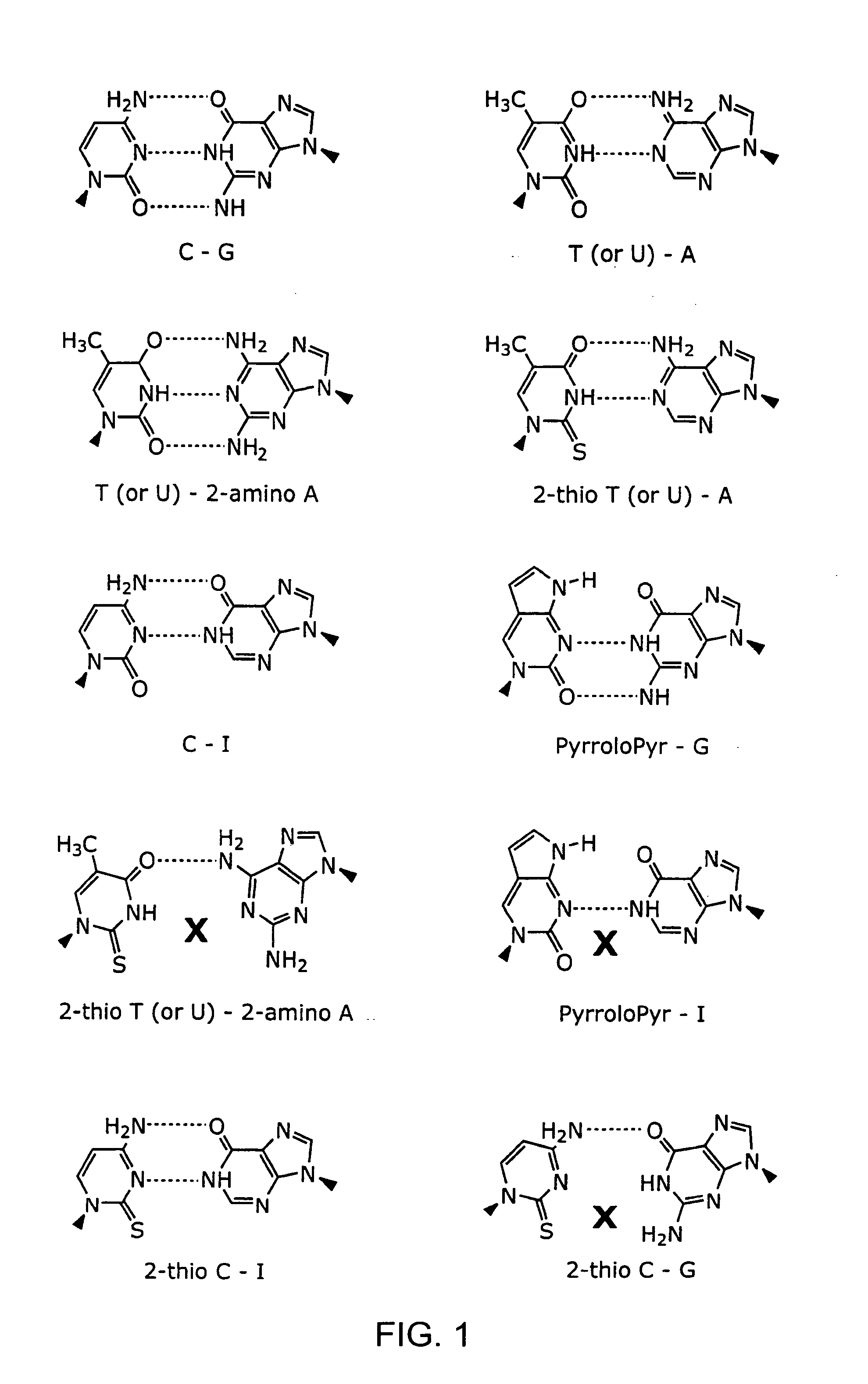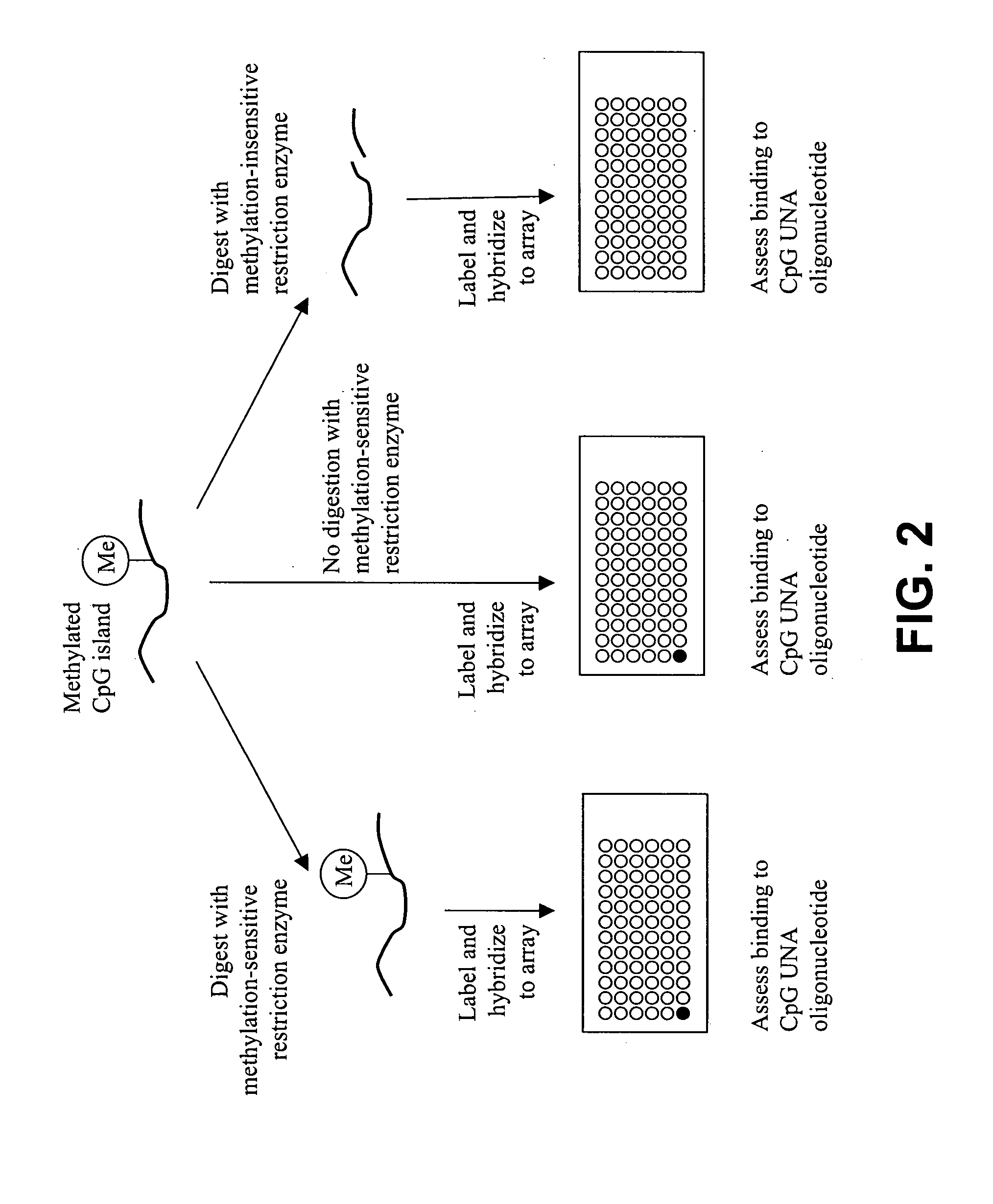Methods and compositions for assessing CpG methylation
a technology of methylation and composition, applied in the field of methods and compositions for assessing cpg methylation, can solve the problems of false positive results, method failure to meet the need, and limited method,
- Summary
- Abstract
- Description
- Claims
- Application Information
AI Technical Summary
Problems solved by technology
Method used
Image
Examples
Embodiment Construction
[0045] Methods and compositions for assessing CpG island methylation are provided. Specifically, the invention provides an unstructured nucleic acid (UNA) oligonucleotide that base pairs with, i.e., hybridizes to, CpG islands. The subject oligonucleotide may be present in an array, and find use in methods for evaluating methylation of CpG islands in cells. In one embodiment of the subject methods, a sample containing a CpG island is contacted with a methylation-sensitive restriction enzyme to produce a target composition, and binding of the target composition to a subject oligonucleotide is assessed. The subject compositions and methods may be used to compare CpG methylation patterns in cells, and, as such, may be employed in a variety of diagnostic and research applications. Kits and computer programming for use in practicing the subject methods are also provided.
[0046] Before the subject invention is described further, it is to be understood that the invention is not limited to t...
PUM
| Property | Measurement | Unit |
|---|---|---|
| Stability | aaaaa | aaaaa |
Abstract
Description
Claims
Application Information
 Login to View More
Login to View More - R&D
- Intellectual Property
- Life Sciences
- Materials
- Tech Scout
- Unparalleled Data Quality
- Higher Quality Content
- 60% Fewer Hallucinations
Browse by: Latest US Patents, China's latest patents, Technical Efficacy Thesaurus, Application Domain, Technology Topic, Popular Technical Reports.
© 2025 PatSnap. All rights reserved.Legal|Privacy policy|Modern Slavery Act Transparency Statement|Sitemap|About US| Contact US: help@patsnap.com



